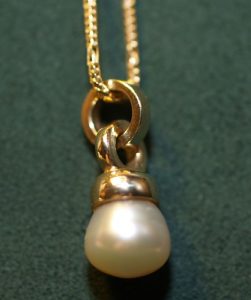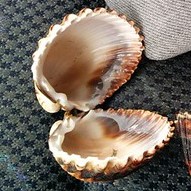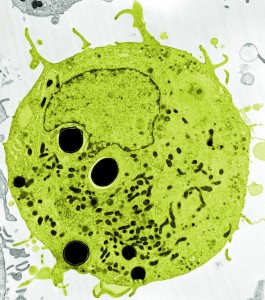Why do clams make pearls?
By Myfi Williams
 Pearls are seen as objects of beauty; we have used them for jewellery and decoration for hundreds of years. Where do they come from, and how are they made? Today we can make ‘imitation pearls’, from materials such as glass or coral, but in the past we didn’t have the materials and methods to make these imitation pearls. When pearls were first used they had to be harvested naturally, earning them the name ‘natural pearls’. These natural pearls are still harvested today.
Pearls are seen as objects of beauty; we have used them for jewellery and decoration for hundreds of years. Where do they come from, and how are they made? Today we can make ‘imitation pearls’, from materials such as glass or coral, but in the past we didn’t have the materials and methods to make these imitation pearls. When pearls were first used they had to be harvested naturally, earning them the name ‘natural pearls’. These natural pearls are still harvested today.
Natural pearls are made by certain types of bi-valve mollusc, such as clams or oysters. A bi-valve mollusc has a hard outer shell, made from calcium carbonate, which is joined by a hinge. Its soft body is protected from predators inside of this hard shell. These creatures will also often bury themselves in the sea floor, giving themselves an extra layer of protection. So this is how an oyster might protect itself on the outside from predators like starfish or crabs, but how can it protect its insides from infection?

Sometimes a parasite can get inside the shell of a mollusc, much like how a bacterial infection can get inside our bodies. The parasite can get in while the mollusc is eating or breathing – in a human, this is often stopped by snot in our nose and saliva in our mouths. If this parasite is able to survive inside the shell of the mollusc, the mollusc’s immune system will be activated. It will irritate the mollusc and cause an immune response. This immune response happens in the formation of a ‘pearl sac’ around the microscopic intruder. This pearl sac is made of mantle tissue cells. The mantle is a fleshy layer of tissue which sits between the body of the oyster and its hard outer shell. Chemicals called calcium carbonate (CACO3) and conchiolin are then used to cover this pearl sac. These chemicals harden, trapping the parasite inside. When these chemicals harden, it produces the iridescent shine that we see in pearls. The chemicals are secreted and allowed to harden many times, producing a pearl. We can think of this a bit like making Papier Mache. To make the structure strong, many layers of paper and glue are added and then allowed to dry. A similar process occurs when a mollusc makes a pearl.

A macrophage
We have a similar immune response in the human body, called a granuloma. This is when the body uses a type of white blood cell, known as a macrophage, to wall off a serious infection that it can’t get rid of. If this happens then the granuloma may need to be removed through surgery or chemical treatment. Sometimes a human granuloma will harden through calcification. This will cause the bundle of white blood cells to harden and turn white. Unfortunately, our version of this immune response isn’t quite as pretty as the molluscs!
